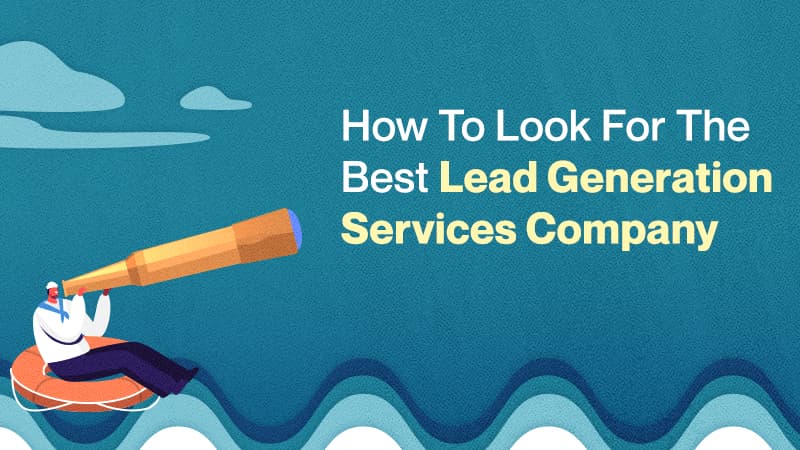In this era of digital transformation, it has become clear that people buy experiences, not products. Account-based marketing (ABM), a method traditionally focused on the accounts that will drive the most revenue, is picking up steam, and it’s proving to be an effective B2B marketing strategy to generate revenue and increase ROI
Indeed, a whopping 99% of marketers say ABM has a higher ROI than other marketing initiatives. Last year, more than one-third (35.9%) of marketers surveyed said that at least half of their marketing is account-based. In the next year, the majority of B2B marketers expect ABM (49%) to have the most significant impact on their business outcomes
However, marketers are still struggling to fully unlock the potential of ABM because their current approach creates random customer interactions and one-off campaigns. These initiatives bring in short-term results and lack in establishing long-lasting customer loyalty. Below, we’ll highlight some of the must-haves of an effective account-based approach.
Sales and Marketing coordination
B2B organizations face an increasingly complex buyer journey and sales cycle. To add to that, there are a number of different decision-makers within a single account team, which requires a shared sales and marketing strategy to effectively target the right people at the right time, every time.
The more traditional lead-based marketing approach on its own — without an account-based strategy — hasn’t delivered effectively for the modern B2B buyer. It often results in disconnected and conflicting customer experiences and wasted time and resources for sales and marketing teams. Sales and marketing teams that collaborate closer as one team have a better ROI on their efforts.
Organizations need to build a shared data infrastructure where all data sources are combined into one real-time customer engagement data source and is accessible for both sales and marketing. Otherwise, sales teams don’t know what marketing has done and where prospects are in their customer journey and marketing doesn’t have access to the engagements and interactions that an account has had with sales teams.
Related: What is Smarketing? (And Why It’s Important)
Make experience your business
Businesses can no longer compete based on product and price. Today, experience is the new brand currency. It’s also the new competitive differentiator. This concept applies to all forms of online and offline engagement, including ABM. It’s important that you put people and experience at the center of your account-based efforts and call them ABX, or account-based experiences. That’s because an account-based approach isn’t just about marketing — it requires collaborating with an ecosystem of teams across your organization to share the same responsibility and promise to customers and delivering cohesive experiences no matter how big or small or at what maturity level their teams are currently at. Customer experience is a shared responsibility across every team.
Build a single view of the customer
A single view of the customer is imperative for effective ABM. Sales and marketing teams need to collaborate to stitch together first, second and third-party data, including CRM, behavioral, transactional, financial, operational data, and more — to get a true end-to-end view of customers in real-time. Effective ABM requires a real-time living and breathing customer profile that is connected to all your online and offline channels, such as email, mobile, advertising, web, call centers, and direct mail. Once this happens, account-based experiences start to build off the previous one, ensuring the most relevant experience possible for buyers.
Related: More Than a Leads List: How Data Impacts ABM, According to Research
Use AI for ABM personalization
Once data infrastructure is in place, the right solution must include artificial intelligence in order to give companies three major advantages: personalization, accuracy, and efficiency. For example, during account selection, AI can help save weeks and months analyzing multiple data sources to help you develop an accurate, data-driven ideal customer profile. Also, knowing when a prospect is on your website, as well as what they are looking at in real-time can help identify which content buyers should see next, no matter where the customer decides to engage with your brand next. This AI-powered, personalized approach throughout the buyer’s journey keeps ABX as personalized and relevant as possible to close the deal more quickly, eventually turning engagement into increased sales and ROI.
Related: 4 Proven ABM Techniques to Maximize Lead Conversion
ABX is an ongoing strategy
There is a lot of misconception around what qualifies as a successful ABX strategy. One thing is for sure: It is not just a single point in time. Account-based experiences are ongoing conversations made up of influential touchpoints with key accounts that are personalized, coordinated, and continuous. It’s a focus on the lifetime value of a specific account that adds up to a larger, holistic, and longer-term customer relationship from awareness to advocacy and beyond
Conclusion
Remember, people buy experiences, not products, so it only makes sense to put people and experiences at the center of your ABM strategy across every touchpoint in concert with sales. With experience at the center of your ABM strategy, it’s proven to help B2B brands reach and influence their customers more effectively, and to help them experience what customers want. And it’s of value to all marketers, regardless of company size or marketing maturity.




